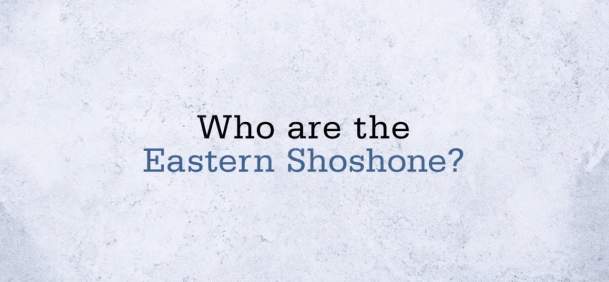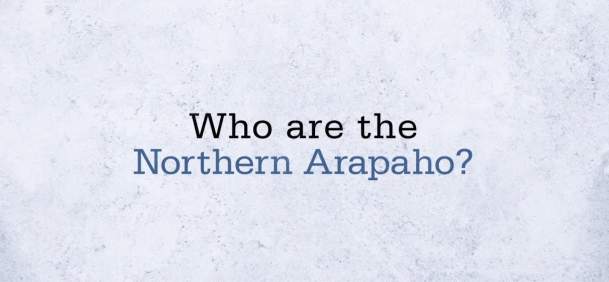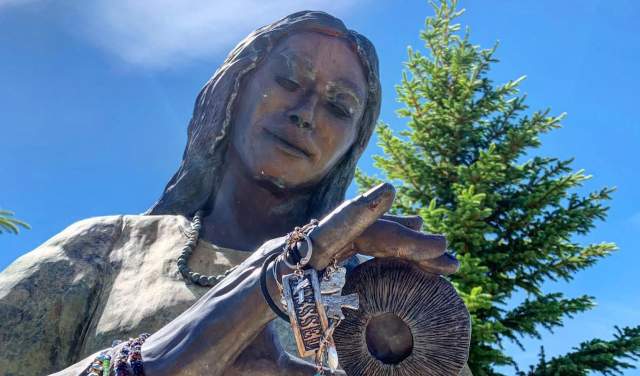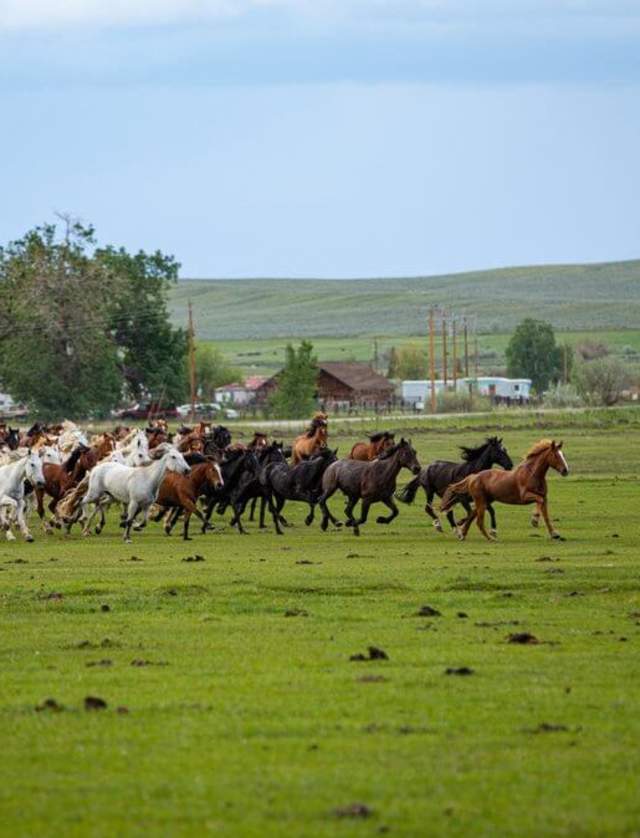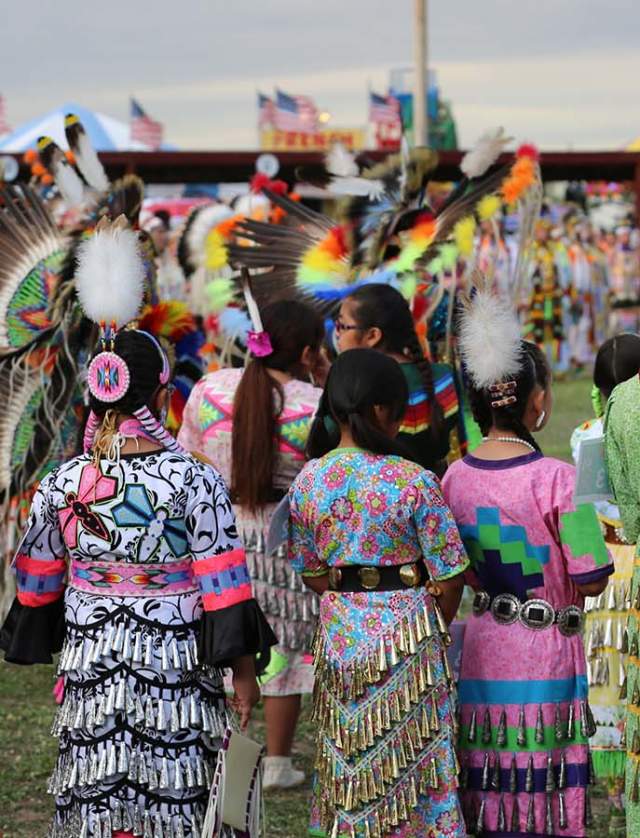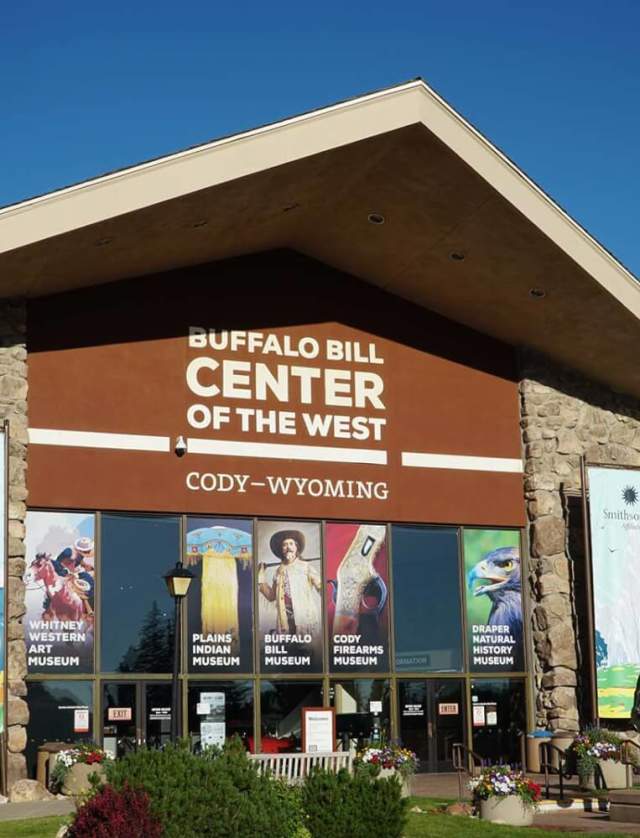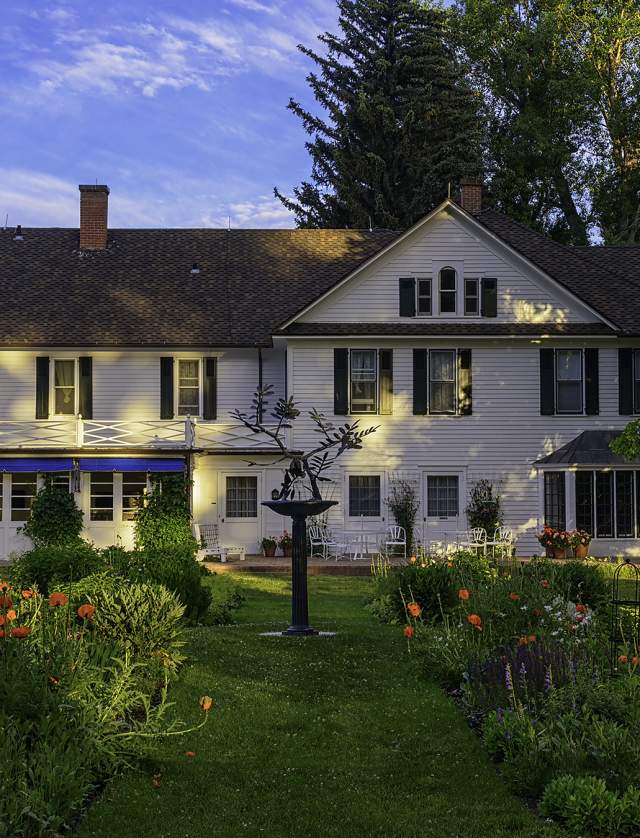Your browser is not supported for this experience.
We recommend using Chrome, Firefox, Edge, or Safari.
Indigenous Peoples Culture
Throughout Wyoming, you can find the lifestyles, celebrations and traditions of Indigenous peoples in both remnants of the past and contemporary culture. This land has been home to many Plains Indian tribes, including the Arapaho, Arikara, Bannock, Blackfeet, Cheyenne, Crow, Gros Ventre, Kiowa, Nez Perce, Sheep Eater, Sioux, Shoshone and Ute tribes. Today, both the Eastern Shoshone and Northern Arapaho reside on Wyoming’s Wind River Indian Reservation.
Make your trip to Wyoming more meaningful by taking the time to learn about the area’s Indigenous people, from those who left their mark long ago to those who are still making their mark today.
Click these tabbed options to find out more information.
Wind River Indian Reservation
Located in Wyoming’s Wind River Basin in the “Valley of the Warm Winds,” the Wind River Indian Reservation encompasses more than 2.2 million acres and is home to thousands of members of the Eastern Shoshone and Northern Arapaho tribes. Within the Reservation’s boundaries are the communities of the Arapaho, Crowheart, Ethete and Fort Washakie. This stunning part of Wyoming is also home to 240 lakes, hundreds of miles of rivers and streams and some of the state’s most special places.
Eastern Shoshone
The Wind River Indian Reservation was established for the Eastern Shoshone tribe in 1868. It’s uncertain how far back the tribe’s history goes, but evidence dates back thousands of years. The Shoshone were new inally a nomadic tribe whose location ranged from central Wyoming to the west coast. Today, the Shoshone share the Reservation with the Northern Arapaho. While no boundaries exist between the tribes, parts of the Wind River Indian Reservation, such as Fort Washakie and Crowheart, are primarily Eastern Shoshone.
Northern Arapaho
Culturally referred to as Plains Indians, the Northern Arapaho are a historically unique nomadic tribe. They resided in various areas across the US, including the Midwest’s Great Lakes region, before migrating west and becoming buffalo hunters. After negotiating the Treaty of 1851, the Arapaho and Cheyenne shared land that included parts of Wyoming, Colorado, western Kansas and Nebraska. The Northern Arapaho were meant to have their own reservation in the Powder River Region around Wyoming’s Bighorn Mountains, but the US government never offered it to them. Instead, this tribe was sent to live with the Eastern Shoshone on the Wind River Indian Reservation, which they’ve resided on since 1878.
Learn more about Native American Culture
11 Incredible Experiences on the Wind River Indian Reservation
- 5 min read
Telling Unexpected Stories through Art: Q&A with Robert Martinez
- 7 min read
Learn about Cultures Past & Present at these Native American Sites
- 4 min read
Native American Cultural and Historic Sites
Explore sacred sites like Devils Tower and the Bighorn Medicine Wheel, along with places displaying artifacts from Plains Indian tribes like the Vore Buffalo Jump and several petroglyph sites.
Native American Museums
Wyoming is home to several museums highlighting the cultures of local tribes, including the world-class Indian Plains Museum located within the Buffalo Bill Center of the West.
Tour the Reservation Virtually
Presented by students of Fort Washakie High School, this virtual tour of the Wind River Indian Reservation tells stories both past and present, including narratives about well-known historical figures and information about the area’s stunning landscapes.


